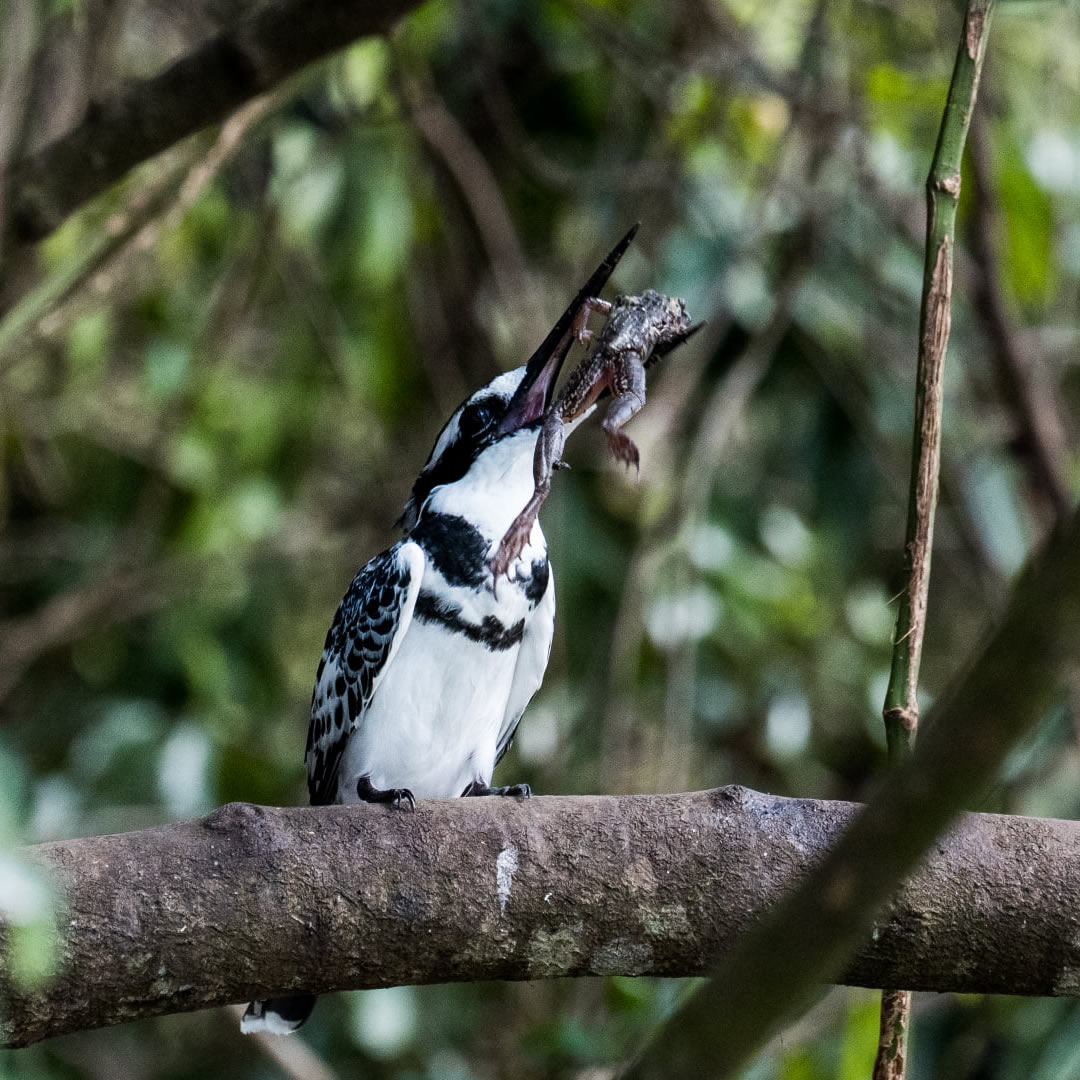One of the oldest rainforests in Africa, Nyungwe is rich in biodiversity and spectacularly beautiful. The mountainous region is teaming with wildlife, including a small population of chimpanzees as well as 12 other species of primate, including the L’Hoest’s monkey endemic to the Albertine Rift. Nyungwe National Park protects the largest highland rainforest in East Africa. Even from the main road, you’ll be blown away by the endless views over layers of steep jungle-clad mountains. It provides an opportunity to see an amazing variety of monkeys and birds. It’s also a prime chimpanzee trekking destination and notable for its thrilling 70m-/230ft-high canopy walk.
Nyungwe has a good variety of forest animals, but it’s the primates that steal the show. Thirteen species are present, including chimpanzees and Ruwenzori colobus monkeys. Both can be tracked on separate activities. Another highlight is the land-dwelling l'Hoest's monkey, which can often be found along the main road and in the campsite.
The scenery is nothing less than spectacular. Even a drive on the main road will offer incredible views of the pristine rainforest canopy stretching over endless hills toward the Burundi border. A hike to a forest waterfall or to the vast open swamp area offers different glimpses into the stunning range of habitats.
Although Nyungwe is bisected by a surfaced road, guided activities are undertaken on foot. These include chimp trekking at Cyamudongo to see humankind's closest relative, and the breathtaking suspended canopy walkway on the Igishigishigi Trail. Numerous other walking trails are available, some rated highly for monkey viewing or bird watching, while others visit scenic waterfalls, mountain summits or landmarks such as the most remote source of the Nile.
One of the most interesting and popular attractions in Nyungwe Forest is the Nyungwe canopy walk. The canopy walkway gives visitors a unique perspective of the tree canopy of Nyungwe Forest. The view from the suspended bridge also enables visitors to get above the tree canopies in order to get a bird’s eye view of the surrounding forest. The canopy walkway was created in 2010 by the Rwanda Development Board as a of improving access to the unique habitat of Nyungwe forest to a broader audience. The canopy walkway is best enjoyed during an early morning walk when the weather is generally better and risk of rain lower. Many birds and other animals are also active during this time. The trails that lead to the canopy walkway can also be combined with hikes to other interesting places such as Kamiranzovu swamp. For more information ask your guide or contact Nyungwe Headquarters.
Nyungwe National Park is a stunning birding destination. Casual birders will be amazed at the variety of colorful species fluttering around, while dedicated bird-watchers have an opportunity to mark off many lifers. It pays to ask for a specialist birding guide at the park’s headquarters as they can identify many species by call. Of specific interest are the many Albertine Rift endemics and birds unique to the highland forest habitat. Three birds unrecorded elsewhere on the eastern side of the Albertine Rift are Albertine owlet, red-collared babbler and Rockefeller’s sunbird.
 Pied Kingfisher
Pied Kingfisher